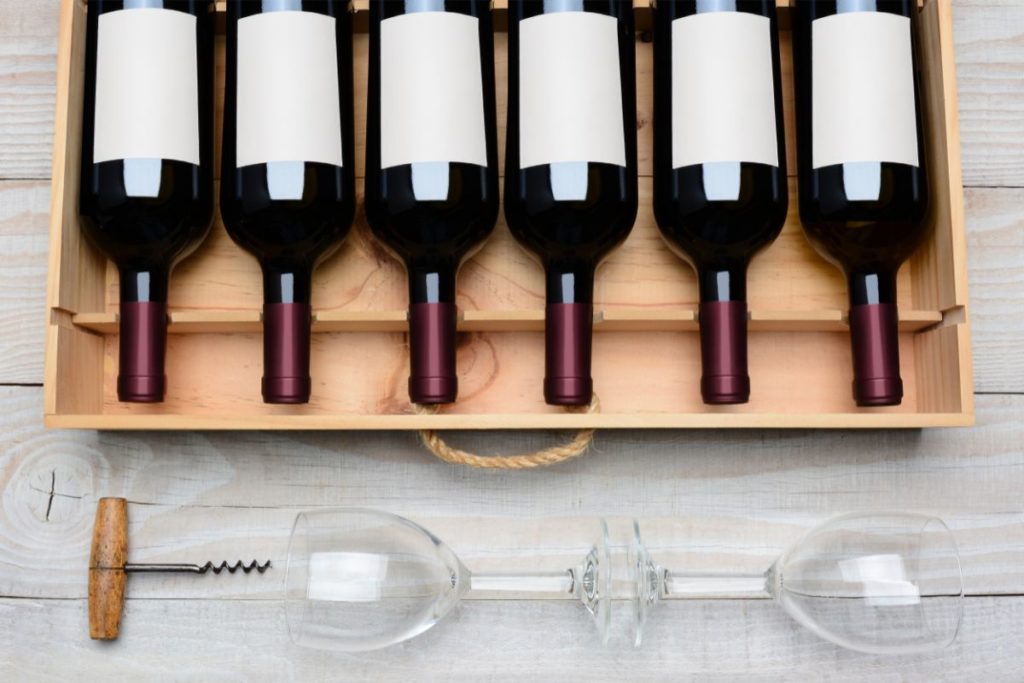The idea of vintage variation that it has been meticulously crafted from grapes grown in a specific year, capturing the essence of that particular growing season, adds an element of mystique and sophistication. However, non-vintage wines also have their appeal with winemakers blending multiple vintages to create a consistent flavor profile year after year.
Key takeaways
- vintage wines are produced from grapes harvested in the same year. The taste and flavour reflect that special year
- non vintage wines are wines made wines of different vintages. This guarantees a continuous quality of the blend.
- non vintage wines are important for champagne and port. The standard champagnes are non vintage champagnes similar with port wine.
- most white, red and rose wines are vintage wines
What does NV mean in wine?
Nonvintage wine, often labeled as NV on the bottle, is a unique offering that invites wine enthusiasts to embrace the diversity of each vintage. Unlike vintage wines, which are derived from grapes harvested in a specific year, nonvintage wines blend wines from multiple years to create a consistent and well-balanced flavor profile.

This process allows winemakers to artfully blend different vintages to achieve a harmonious and complex taste that transcends the limitations of individual growing seasons. By blending wines from various vintages, winemakers can navigate the fluctuations of weather and harvest conditions, ensuring a reliable and high-quality product year after year.
Advantages of Non Vintage Wine
While some may view non vintage wines as lacking in character or complexity compared to their single-vintage counterparts, this perception undersells the skillful craftsmanship involved. Non vintage wine requires an exceptional level of expertise and intuition on the part of the winemaker to artfully blend different components into a seamless final product.
Furthermore, nonvintage wines offer a snapshot of consistency and reliability in sparkling wine that embodies the essence of its producer’s signature style across various years.
Non vintage sparkling wine
Non-vintage sparkling wine, often overlooked in favor of its vintage counterparts in bottles, offers a unique and dynamic drinking experience. By blending wines from different years, winemakers can achieve consistency in flavor profile. It results in a product that is consistently high in quality. The wines used for the production of champagne are called reserve wines.

This flexibility also allows for the expression of the house style. Each champagne house often has a signature blend that embodies their distinct character. Non-vintage sparkling wines such as Franciacorta or non vintage champagne also offer exceptional value and accessibility compared to vintage varieties. It makes them an excellent choice for everyday enjoyment.
Multi vintage Wines
These are wines which are used in the champagne region. Multi-vintage champagne, also known as multi-vintage cuvée, epitomizes the artistry and innovation of champagne-making. By blending wines from different years, champagne houses can create a harmonious and complex expression of their house style.
This approach allows winemakers to balance out the characteristics of each individual vintage. This gives more consistent and balanced flavor and consistent taste profile throughout. Multi-vintage champagnes often showcase remarkable depth and complexity, offering a sensory journey that evolves with every sip.
Fortified wines
When it comes to fortified wine, vintage port and non-vintage port are two distinct players in the game of winemaking. Vintage port, produced only in exceptional years, embodies the richness and complexity of a specific harvest.

On the other hand, non-vintage port combines wines from different years to create a consistent style year after year. This diverse approach results in complex flavors that develop over time. It makes vintage ports perfect for aging while non-vintage ports offer a reliable taste with each sip.
What sets great vintage ports apart is their ability to capture the essence of a single outstanding year. They encapsulate the unique characteristics of that particular harvest.
Single Vintage Wines
Single vintage wine, also known as vintage wine, are a unique and sought-after type of wine. These wines are made from grapes harvested in a single specific year. This distinct characteristic means that the flavor and quality of the wine are directly influenced by the particular weather conditions, soil composition, and vineyard practices of that specific year.

For wine enthusiasts, single vintage wines offer an exceptional opportunity to experience the nuances and variations that each year brings to the final product. The aging potential of these wines can vary significantly. This depends on the characteristics of the specific vintage year, making them alluring for collectors and connoisseurs alike.
Why Do Vintners Like to Produce Non-Vintage Wines?
Vintners are drawn to producing non-vintage wines for a multitude of compelling reasons. Firstly, non-vintage wines provide an opportunity for vintners to showcase their skill in blending different vintages. They create sparkling wines with a consistent and distinctive flavor profile that sets their wine apart.
This blending process allows vintners to craft complex and well-balanced wines. They transcend the variations of individual harvests, offering consumers a reliable and high-quality product year after year.

Flexibility in Wine making for non vintage wine
Moreover, non-vintage wines grant vintners the flexibility to adapt to changing market demands and climatic conditions. By incorporating grape varieties from various years, winemakers can adjust the composition of their non-vintage blends. They can respond to fluctuations in grape quality or unusual weather patterns.
This adaptive approach not only ensures the production of exceptional wines. It also enables vintners to maintain a steady supply reserve wine regardless of any unforeseen challenges within the industry. The solera system which is used in wine regions from the Champagne to Greece makes use of this flexibility

What makes a good vintage?
First and foremost, the weather during the growing season has a significant impact on grape quality. Under optimal conditions often the resulting wines in exceptional vintages as well as the absence of fungal diseases. They are caused by too much rain.
Vintage Charts
Vintage charts are an integral part of the wine industry. They provide a historical record of past vintages and their perceived quality. These charts are typically created by wine experts or publications. These charts serve as a guide for consumers, collectors, and producers alike. By analyzing factors such as weather conditions, grape quality, and winemaking techniques, vintage charts aim to predict the aging potential and overall quality of wines from a specific region and year.

This allows you to pick the perfect bottle of wine based on the varietal and region. Vintage Charts are available from wine shops or wine guides for most wine regions like southern italy, northern italy, californian and the napa valley. They also give you an indication when to open single varietal vintage wines like pinot noir, pinot meunier, cabernet sauvignon, chardonnay and others.
Terroir and Vintage
Moreover, terroir—referring to the unique combination of soil, climate, and topography—also greatly influences a vintage’s character and quality. This sense of place imparts distinct flavors and aromas to the wine that cannot be replicated elsewhere.
Additionally, some vintages exhibit longevity due to their well-balanced acidity and tannins, enabling them to evolve beautifully over time.
Is vintage wine better than non-vintage wine?
If there’s one thing that wine enthusiasts can’t seem to agree on, it’s the timeless debate of vintage versus non-vintage wines. While both have their merits, there’s something undeniably alluring about a vintage wine.
The idea that it has been meticulously crafted from grapes grown in a specific region that same year, capturing the essence of that particular growing season, adds an element of mystique and sophistication. However, non-vintage wines also have their appeal with winemakers blending multiple vintages to create a consistent flavor profile year after year.

